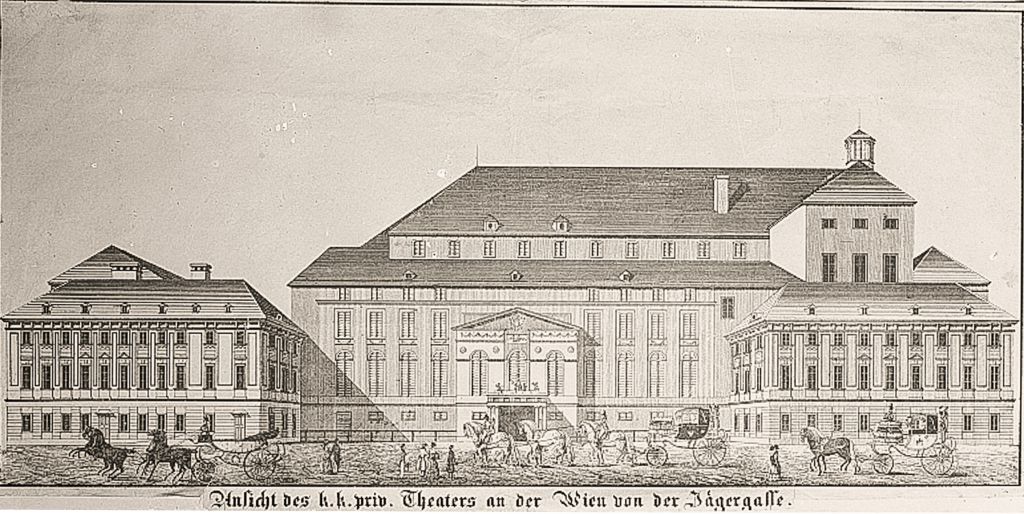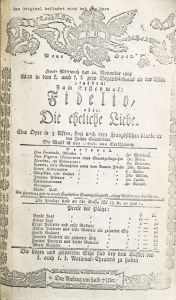Or: How do we THINK ABOUT BEETHOVEN when figuring out how to MEMORIALISE BEETHOVEN during this jubilee year?
Here in Vienna, the present Beethoven Year celebration is difficult to overlook. Beethoven glares out at us from large posters and billboards in the most varied versions of the well-known Stieler portrait. And alongside the mdw, numerous Viennese institutions ranging from the city’s concert halls and opera houses to the other universities and on to cultural organisations like BasisKultur Wien are devoting programmatic focuses to the composer throughout this year. In much of it, typical images of Beethoven and Beethoven clichés—like that of the outstanding genius or the ill-tempered loner and eccentric—are emphasised over and over, quite often simply being reproduced in an unquestioning manner. Such things were predicted during the run-up to this jubilee year, offering reason enough to query and ponder just how such narratives arise in the first place, what they tell us about ourselves and our commemorations, and just what commemorative images we’ll (want to) include in shaping this year’s activities.
Reflection on Remembrance

This challenge has been taken on by the research project “Erinnerungsort Beethoven: Theater an der Wien” [A Place that Remembers Beethoven: …], launched in 2018 at the mdw’s Department of Musicology and Performance Studies. With a focus on the phase during which Beethoven resided and worked at the Theater an der Wien, putting on several academies there and composing Fidelio, we’re looking at just how and by what the culture of remembrance emanating from this location was shaped.
In a very concrete sense, our project’s initial focus was on Beethoven’s immediate environment during his activities at the Theater an der Wien. This enabled us to make out a composer who lived and worked as one of numerous protagonists within a lively theatrical network. Contemporaries described him as a convivial colleague who, living directly in the building, was involved in the various working processes at the theatre. His opera Fidelio was revised and re-cast as part of the everyday work involved in theatrical production, then rehearsed anew and performed again—and it in no way stood out from the rest of the theatre’s programming as an extraordinary work by an exceptional genius. But why, then, did these memories of the convivial composer not become part of the general memory of Beethoven? And why, in the city’s commemorative culture, is Theater an der Wien more strongly connected with Mozart, The Magic Flute, and Schikaneder than it is with Beethoven and his Fidelio?
This, in turn, leads us to the question of how Beethoven’s Theater an der Wien period has been remembered across over two centuries of commemoration. After all, it was long the case that the Theater an der Wien just didn’t fit into the typical list of Viennese places where Beethoven was commemorated. Evidently, the preference was for remembering him as a loner inspired by nature on solitary walks through the green hills, rather than as one of the many protagonists who participated in the city’s faced-paced everyday theatrical life. Why was the world première of Fidelio in 1805 long viewed as a flop, in contrast to the third version performed at the Kärntnertortheater in 1814? What role was played in this view by the French occupation of Vienna, during which the première took place? And how does the impression shift if one views Fidelio not in isolation (as Beethoven’s sole opera), but in context with the other repertoire programmed back then at the Theater an der Wien?
Exhibition, Book Publication, Performative Building Tour
These themes and questions were dealt with by a group of mdw PhD students in a research seminar at the Department of Musicology and Performance Studies during the summer semester of 2019. The students joined forces to develop the concept for an exhibition entitled BEETHOVEN|AN der Wien|DENKEN, to be shown in early 2020 at the Theater an der Wien. (This exhibition opened on 15 February.) One of its focuses is on the topic of living at a theatre: for his work at the Theater an der Wien, Beethoven was assigned a flat that later on became the subject of numerous stories and imaginings. But just how this flat actually looked, how large it was, and what he did there—compose, play piano, conduct correspondence, receive visitors…?—can’t be said with any certainty. The ways in which various people imagined this dwelling over the course of time and the thoughts or assertions that they associated therewith are in large part reflections of the themes and questions projected on Beethoven during their respective time periods. The exhibition therefore presents various hypothetical stagings of Beethoven’s apartment as well as a “puppet house” that allows visitors to act things out themselves while also serving as a place in which to reflect upon just what images of Beethoven are linked with the various ideas about the place where Beethoven lived: Did this genius, who stood above worldly things, live amidst “creative chaos”? How does one imagine the flat of a hero whose monuments now fill shelves like so many trophies? And how about the flat of a rebellious “pop star”?

This exhibition is accompanied by a book—published by Böhlau Verlag in February 2020 under the similar title BEETHOVEN.AN.DENKEN—in which the featured themes are commented upon and lent greater depth in contributions by the students and others. In parallel with this book’s production, the PhD students also teamed up with the Theater an der Wien to create a concept for a performative tour through the theatre building: entitled Looking 4 Ludwig, this tour focuses on Beethoven’s work there and includes performances of his music by mdw students in various places around the building that are normally off-limits to audiences.

